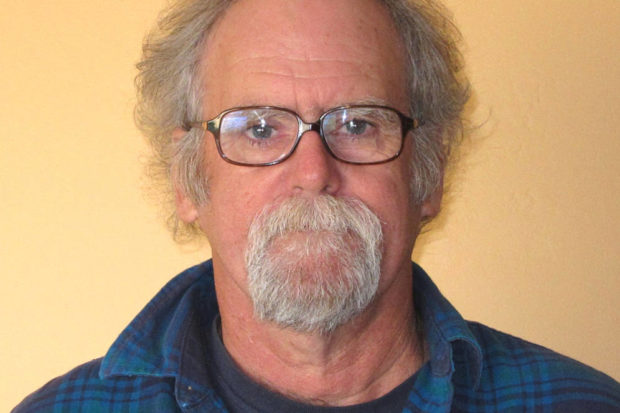
By Tom Frantz
Two disturbing items for air quality advocates slipped under the media radar recently. First, California is moving in the wrong direction with greenhouse gas (GHG) reductions. Carbon dioxide emissions, the key GHG, are increasing according to the 2012 inventory released this past April. Second, Seyed Sadredin has ignored calls for his resignation and is demonstrating even more obviously why he should not be at the helm of the San Joaquin Valley Air Pollution Control District (SJVAPCD).
California is clearly failing to reduce global warming emissions and be the climate leader the rest of the world needs to imitate. In 2008, the California Air Resources Board (CARB) approved a plan to lower the state’s GHG emissions to 1990 levels by the year 2020. It accounted for population and economic growth. The CARB carefully calculated the reductions necessary to reach the goal that had been mandated by the state legislature in 2006. On top of the 2020 goal is an executive order that requires the state to reduce GHG emissions to 80% below 1990 levels by 2050.
The 2020 goal should have been easy. Measures such as strong incentives for solar panels on roofs and efficiency programs for increased building insulation would have given the state a huge jumpstart. Early rules for higher-mileage diesel trucks, more hybrid vehicles and better public transportation would have obtained the rest of the necessary reductions.
But the CARB has moved too slowly. Initially, when the economy tanked in 2008, GHG emissions went down quickly because of decreased economic activity. The CARB took credit for the reductions and then delayed taking meaningful action on new rules because of unproven fears they might damage an economic recovery. An example is how they postponed a carefully planned phase-in of diesel truck rules.
Now, the economy has improved rapidly for a couple of years, and the 2012 GHG inventory released last April shows significant increases in emissions. Predictions for 2013 and 2014 are for greater increases because the drought has decreased the availability of low-carbon hydroelectric energy and the economy continues to heat.
By the end of 2014, the state will likely be back to 2008 GHG levels if not higher. Unfortunately, the CARB will not calculate the 2014 inventory until the end of 2015. At that point, it will not be on track to meet the 2020 goal and will have only five years left out of an original 12. So, the target will likely be missed and California’s opportunity to lead the nation and world in preventing the earth’s climate from catastrophic change will have been squandered.
The CARB tried to spin this bad inventory news last month by saying GHG emissions did not increase as fast as the economy. But that is no different than saying a growing homeless population is OK because of population growth.
Meanwhile, the infamous Sadredin of the SJVAPCD continues to confound and frustrate everyone who strives to breathe cleaner air here in the Valley. Last year, there was a call for his resignation after he publicly told the Environmental Protection Agency to mind its own business. He claimed the federal Clean Air Act should not be applicable to the San Joaquin Valley.
In June of this year, he claimed years of scientific research on pollution were no longer relevant to the Valley. He took an incomplete study of certain fine particulates found in the Fresno area and jumped to conclusions that only a tobacco industry scientist would dare defend. He basically grabbed an incidental observation about asthma attacks and pollution levels and said it proved asthma problems were not related to particulate matter pollution.
Sadredin is not an academic type. But he has surrounded himself with a few hack scientists who are willing to take any unsubstantiated inference between two variables and twist it into false conclusions in order to please their boss. They are the ones giving him his media talking points.
Sadredin sent his “research” results to the Bakersfield Californian, where anti-clean air regulation muckraker Lois Henry quoted him profusely. Ignoring overwhelming scientific consensus, Sadredin claimed, “Relative to other causes, air pollution doesn’t even register as a trigger for asthma attacks.”
During the most recent SJVAPCD board meeting in Fresno (June), Sadredin was strongly questioned over these conclusions by Alex Sherriffs, M.D., and John Capitman, Ph.D., who are the only independent, non-elected board members. Also, at the last CARB meeting in Sacramento (June), board member John Balmes, M.D., clearly showed his anger at hearing the head of the SJVAPCD, with some of the worst air in the nation, spouting off this nonsense to newspaper reporters about asthma attacks not being related to pollution.
Obviously, Sadredin should be fired immediately. Mary Nichols, head of the CARB, could fire him even though she will be the one who should step down or be fired in a few more years when California defaults on meeting its initial GHG reduction goals.
Ironically, air pollution levels will only increase in the Valley with a warming planet.
*****
Longtime clean air advocate Tom Frantz is a retired math teacher and Kern County almond farmer. A founding member of the Central Valley Air Quality Coalition, he serves on the CVAQ steering committee and as president of the Association of Irritated Residents. CVAQ is a partnership of more than 70 community, medical, public health, environmental and environmental justice organizations representing thousands of residents in the San Joaquin Valley unified in their commitment to improve the health of Californians. For more information, visit www.calcleanair.org.
